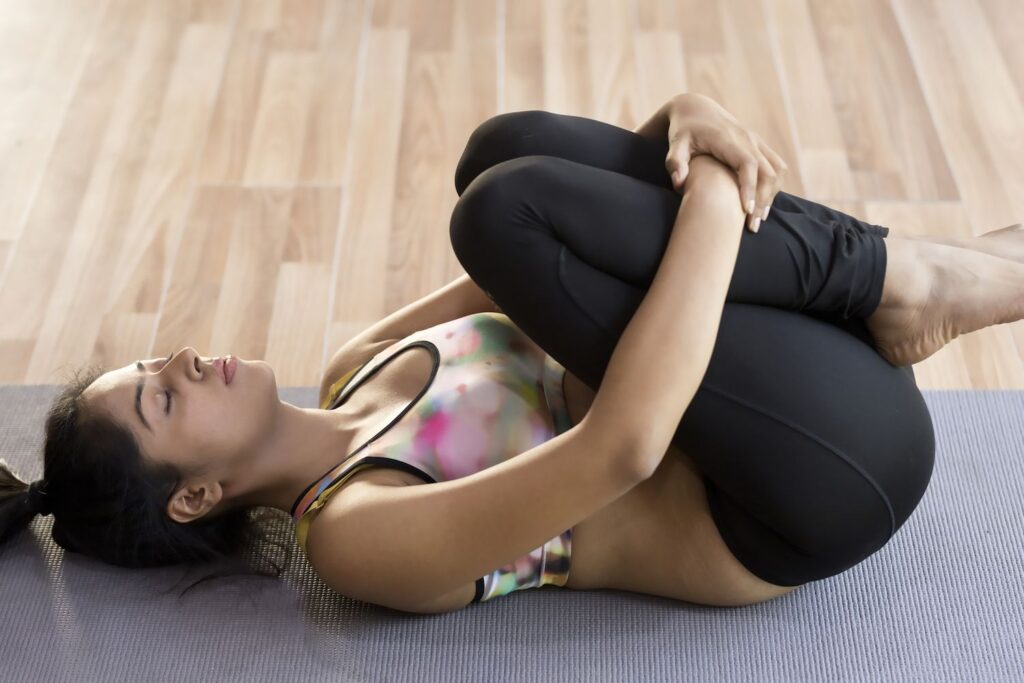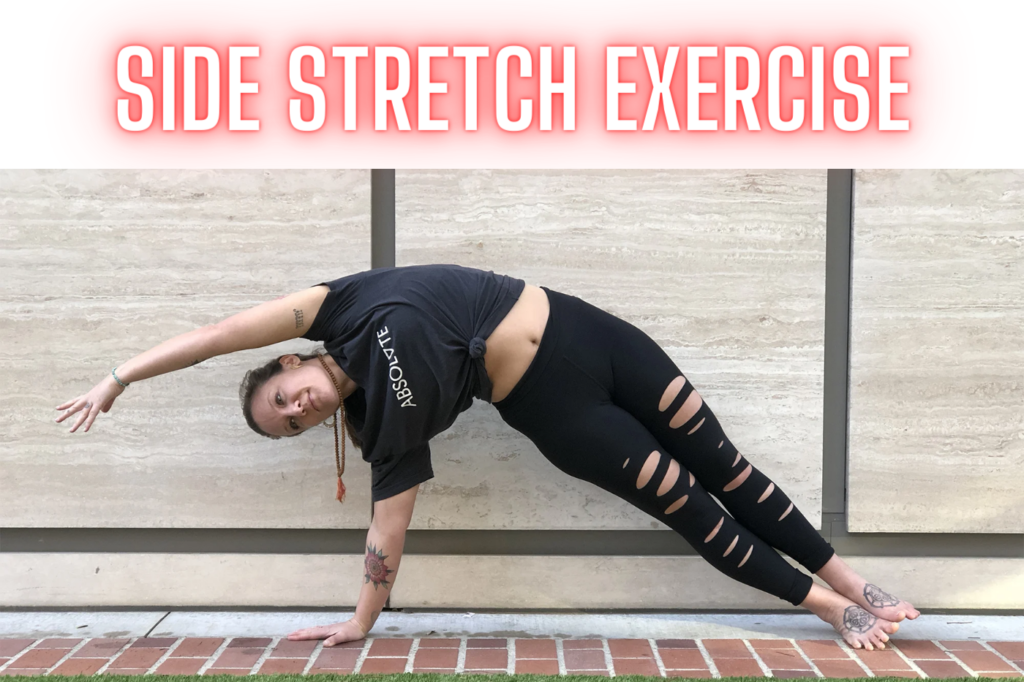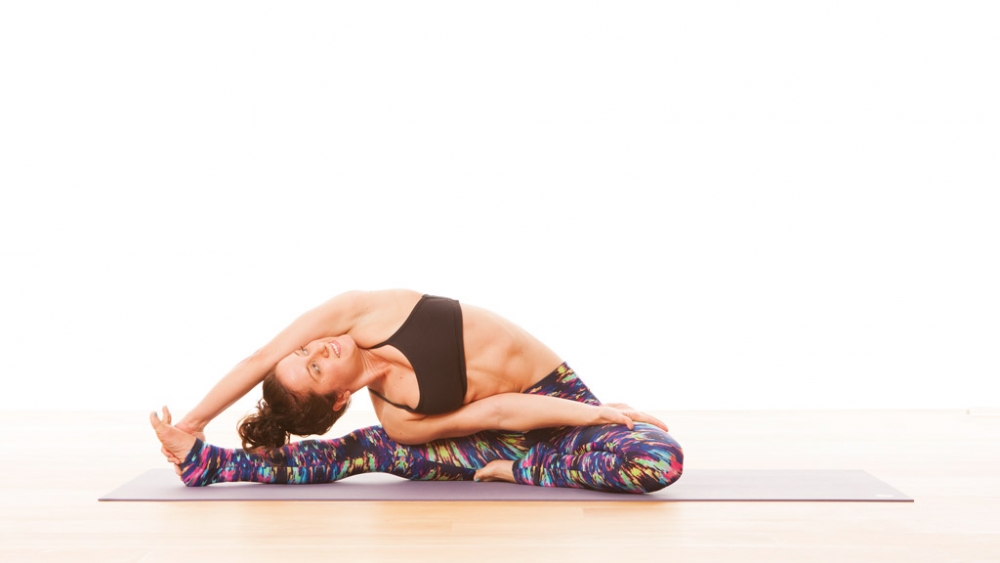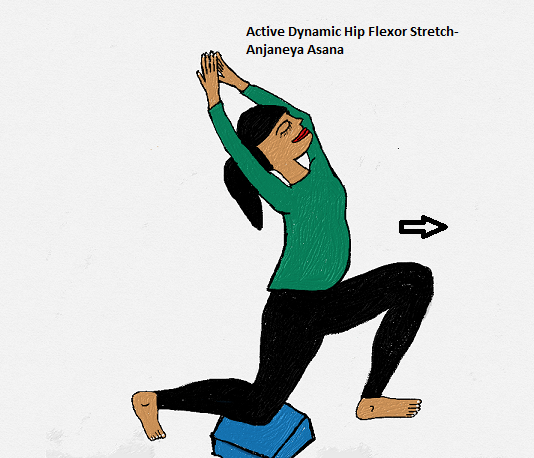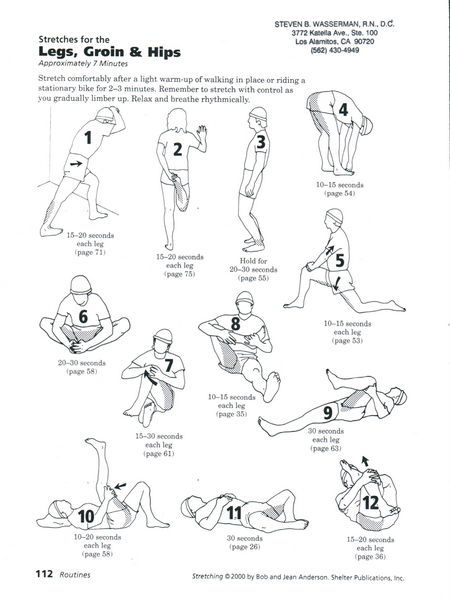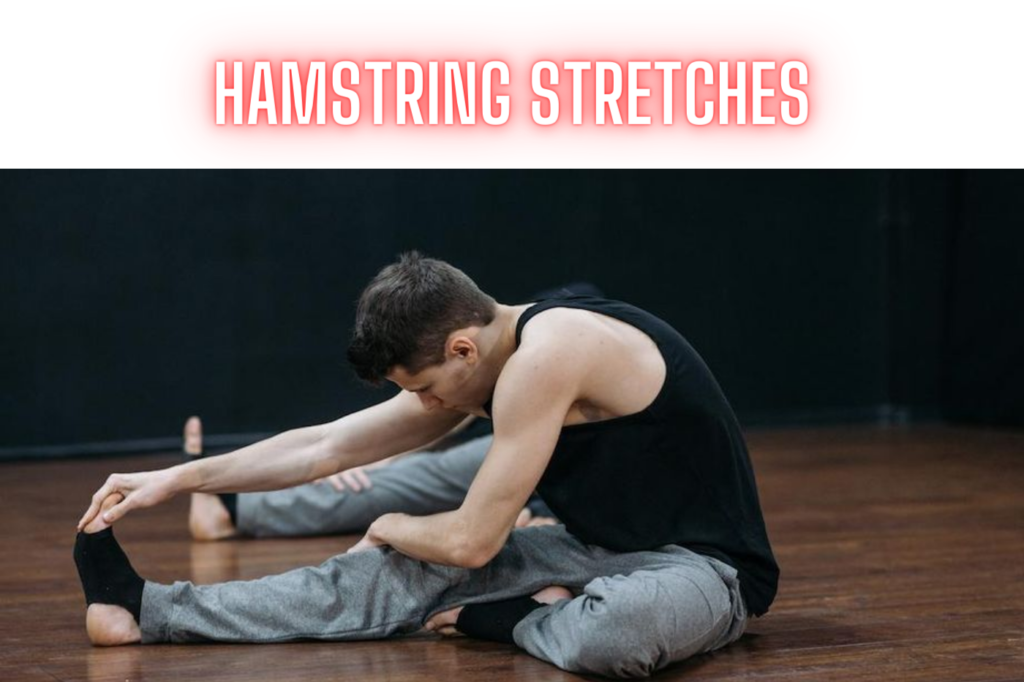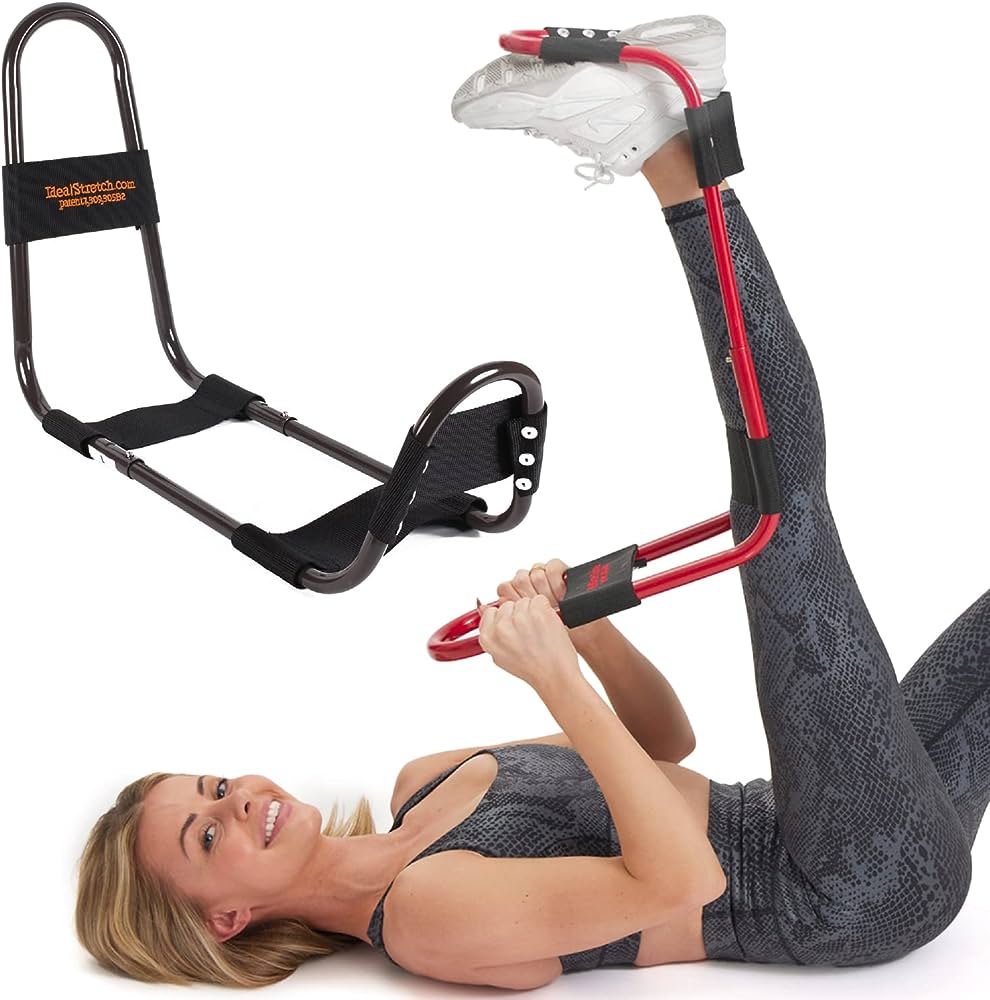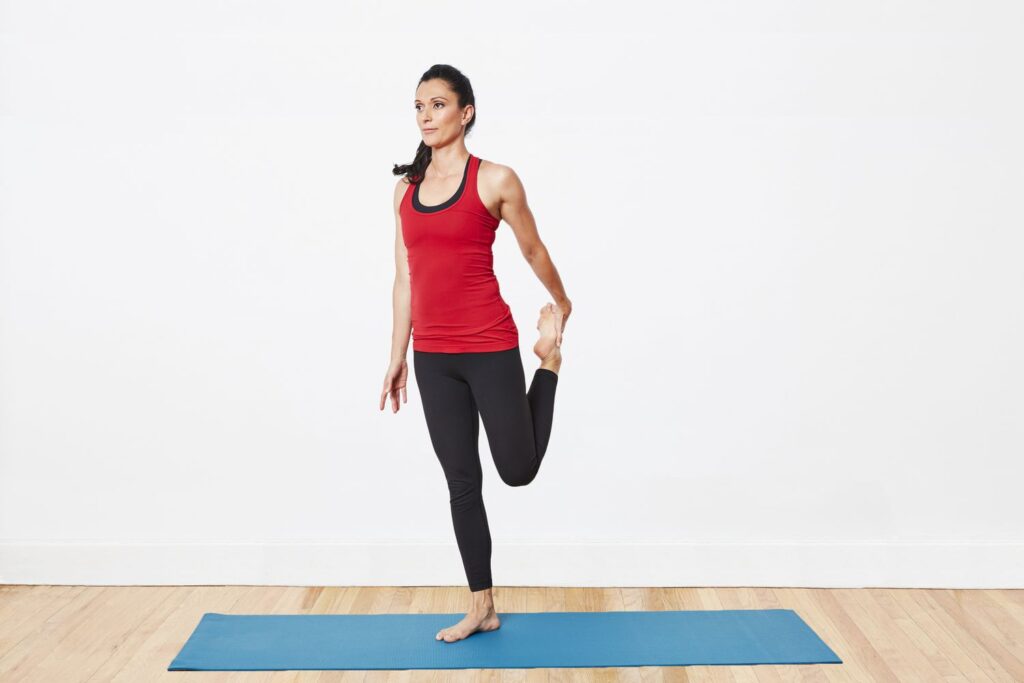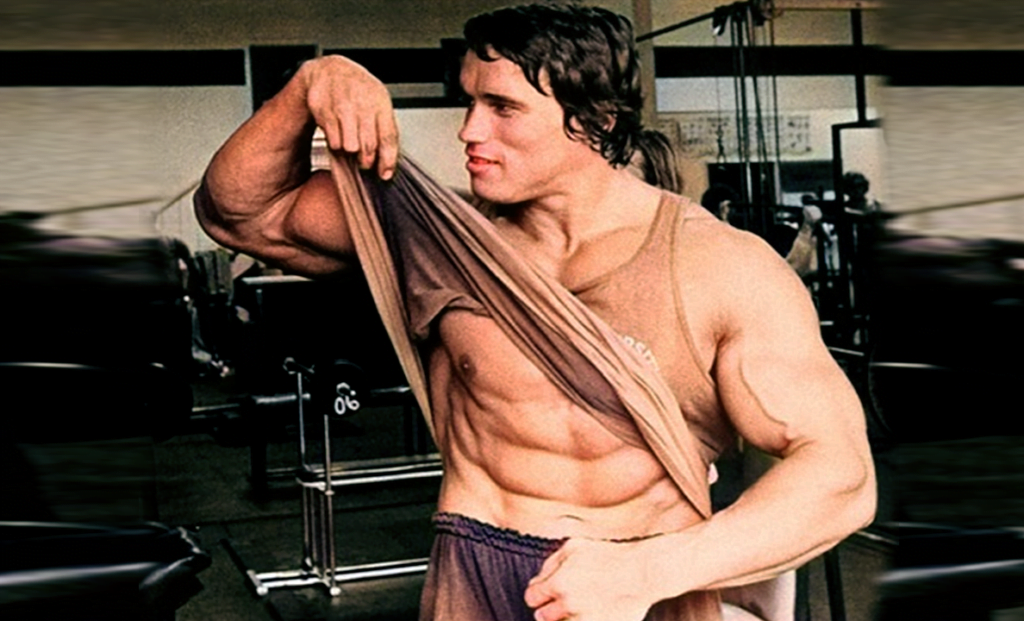The Knee to Chest Stretch helps relieve lower back pain and increases flexibility in the hips. It is a simple yet effective exercise.
The Knee to Chest Stretch is an essential part of any fitness routine. This stretch targets the lower back, hips, and glutes, helping to alleviate tension and improve flexibility. Performing this stretch regularly can lead to improved posture and reduced discomfort in the lower back region.
To do this stretch, lie on your back, pull one knee towards your chest, and hold the position for 20-30 seconds. Repeat with the other leg. This exercise is suitable for people of all fitness levels and can be easily incorporated into daily routines. Regular practice promotes better overall mobility and well-being.
Introduction To Knee To Chest Stretch
This stretch helps to make your hips and lower back more flexible. It is easy to do and does not need special equipment. You can do it at home or anywhere you have space. Regular practice can help improve your range of motion.
The knee to chest stretch can reduce pain in your lower back. It helps to relax muscles that are tight. This stretch can also help reduce stress. Doing it daily can make you feel better.
Anatomy Involved
The Knee to Chest Stretch targets the lower back muscles. It also stretches the gluteal muscles and hamstrings. These muscles help you move and stay active. Stretching them can reduce pain and increase flexibility. This stretch also benefits the hip flexors.
This stretch involves the hip joints. Flexion of the hip occurs during the stretch. The knee joint also bends when you pull your knee to your chest. This movement helps to improve range of motion. Lower back joints get a gentle stretch too.
Preparation For The Stretch
Start with a gentle warm-up to avoid injuries. Perform light aerobic exercises for 5-10 minutes. Walking or jogging in place works well. Stretch your arms and legs to loosen muscles. Ensure your body feels warm and ready.
Always listen to your body. Stop if you feel any pain. Keep your movements slow and controlled. Avoid bouncing or jerking motions. Stay hydrated before and after your stretch. If you have any health issues, consult a doctor first.
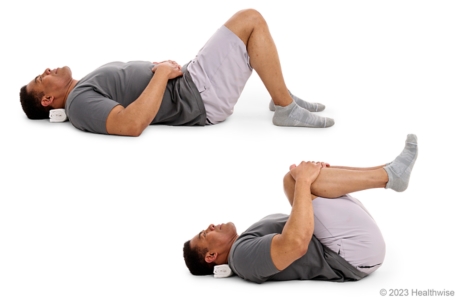
Credit: myhealth.alberta.ca
Step-by-step Guide
Lie on your back on a comfortable surface. Keep your legs extended and arms at your sides. Ensure your back is flat against the ground.
Bend your right knee and bring it towards your chest. Use your hands to gently pull the knee closer. Hold the position for 15 to 30 seconds. Switch to your left knee and repeat the process. Keep your other leg extended during the stretch.
Modifications For Different Fitness Levels
Beginners can start by lying on a soft surface. Hold one knee to the chest. Keep the other leg straight and relaxed. Use a towel to help if you can’t reach your knee. Perform the stretch for 15-30 seconds. Repeat with the other leg.
Advanced users can try the stretch with both knees at once. Start by lying on your back. Pull both knees to the chest. Hold for 30 seconds. Rock gently side to side for a deeper stretch. Add a gentle twist for extra benefits.

Credit: www.nyp.org
Incorporating Into A Routine
Start with the knee to chest stretch daily. This stretch helps improve flexibility. It also reduces lower back pain. Begin by lying on your back. Then, bring one knee to your chest. Hold it for 20 seconds. Switch to the other knee and repeat. Do this stretch every morning.
Use the knee to chest stretch after workouts. It helps cool down muscles. This stretch also prevents injuries. Perform it after a heavy workout session. Start in a lying position. Pull one knee towards your chest. Hold for 20 seconds. Then switch to the other knee. Repeat twice for each knee.
Common Mistakes To Avoid
Many people make mistakes with their posture. Bending the back too much can cause pain. Keeping the back flat is very important. Avoid lifting the head up. The head should stay on the floor. Don’t pull the knee too close to the chest. This can strain the muscles.
Overstretching can lead to injuries. Muscles might get torn or strained. Stretching should be gentle. Listen to your body. Stop if you feel pain. Stretch slowly and carefully. Warm up before stretching to avoid injuries. Always cool down after exercises.
Recovery And Maintenance
After a knee to chest stretch, rest for a while. Drink plenty of water to stay hydrated. Ice packs can help reduce any soreness. Gentle massage can also relieve tension in the muscles. Avoid doing intense activities right away. Listen to your body and stop if you feel pain. Wear comfortable clothing to avoid any strain on your muscles.
Stretch regularly to maintain flexibility. Include different stretches in your routine. Yoga can help improve your flexibility. Always warm up before starting stretches. Stay consistent with your exercise routine. Balanced diet with enough protein supports muscle health. Try to maintain a healthy weight to reduce stress on your knees.

Credit: www.rehabhero.ca
Frequently Asked Questions
What Does The Knee To Chest Stretch Stretch?
The knee to chest stretch targets the lower back, glutes, and hamstrings. It helps improve flexibility and relieve tension.
What Does Bringing Your Knees To Your Chest Do?
Bringing your knees to your chest stretches the lower back, improves flexibility, and relieves tension in the spine. It also enhances circulation and can alleviate lower back pain.
What Is Knee To Chest Used For?
Knee to chest stretches help relieve lower back pain, improve flexibility, and increase blood circulation. They also aid in reducing spinal tension.
What Muscle Pulls The Knee To The Chest?
The iliopsoas muscle pulls the knee to the chest. It includes the psoas major and iliacus muscles.
Conclusion
The knee to chest stretch is a simple yet effective exercise. It promotes flexibility and relieves lower back pain. Incorporate it into your daily routine for better mobility. Remember to perform the stretch gently to avoid injury. Regular practice can lead to improved overall well-being and a healthier lifestyle.

